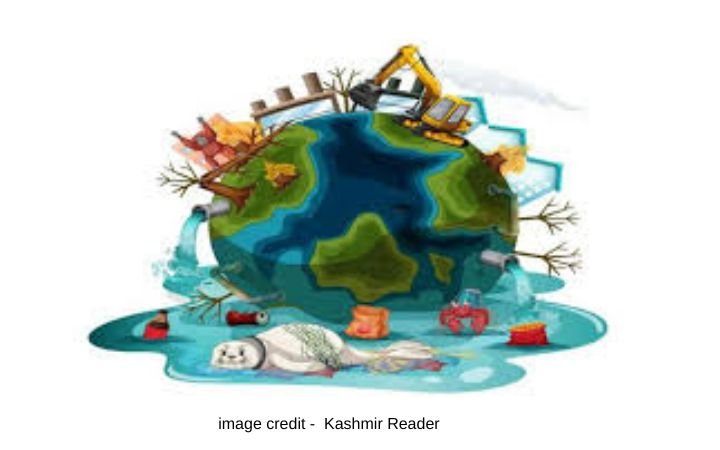Climate change is one of the most threatening problems facing humanity in the 21st century. It affects every aspect of human existence—from ecosystems to economies—and entails urgent, concerted efforts to alleviate its effects. This article explores the main challenges that climate change presents, discussing its impact on different areas and ways to counter them appropriately.
Understanding Climate Change
What is Climate Change?
Climate change refers to long-term changes in temperature, precipitation, wind patterns, and other components of the Earth’s climate system. Though there are natural factors in climate variability, the principal cause of recent changes is human activities, such as the combustion of fossil fuels, deforestation, and industrial processes.
The Science Behind Climate Change
The main greenhouse gases (GHGs) include carbon dioxide (CO2), methane (CH4), and nitrous oxide (N2O). These gases trap heat in the Earth’s atmosphere, thus producing a warming effect. According to the Intergovernmental Panel on Climate Change, global temperatures have risen by around 1.1°C since pre-industrial times, and this has terrible implications for ecosystems and societies.
Key Challenges of Climate Change
1. Increasing Global Temperatures
Global warming is the most explicit expression of global climate change. Rising temperatures exacerbate wildfires, droughts, and heatwaves. The regions of the Arctic are warming at double the rate of the rest of the world. This melts the ice and contributes to sea-level rises.
2. Sea Level Rise
Sea level rise results from the thermal expansion of seawater and the melting of polar ice caps. Rising sea levels submerge low-lying coastal areas and entire island nations, displacing millions of people who cannot live or develop livelihoods in these regions.
3. Extreme Weather Events
Climate change increases the frequency and intensity of extreme weather events, including hurricanes, typhoons, and torrential rains. These events cause deaths, destruction, and significant economic impacts on societies.
4. Loss of Biodiversity
Ecosystems are struggling to adapt to rapid climate shifts. Species extinction rates are accelerating as habitats are altered or destroyed, threatening biodiversity and the essential ecosystem services it provides.
5. Threats to Food Security
Changing weather patterns disrupt agricultural productivity. Droughts, floods, and pests jeopardize crop yields, increasing food insecurity, especially in vulnerable regions of the world.
6. Public Health Risks
Climate change encourages the spread of diseases like malaria and dengue due to rising temperatures and altered precipitation patterns. Heat stress, respiratory illnesses caused by indoor air pollution, and mental health issues related to climate stress are on the rise.
7. Economic Impacts
The financial costs of climate change are severe. Destruction, loss of economic productivity, and increased healthcare costs place a heavy toll on national revenues. Developing nations face additional challenges due to limited resources for adaptation and mitigation.
8. Social and Political Instability
Climate change triggers migration, resource scarcity, and conflicts over arable land and water access. These pressures increase social strain and global instability.
Combating Climate Change Globally
1. International Agreements
The Paris Agreement (2015) is a milestone in global climate action. Its aim is to limit the global average temperature increase to well below 2°C while striving for 1.5°C. Countries have implemented Nationally Determined Contributions (NDCs) to reduce emissions.
2. Transition to Renewable Energy
Transitioning from fossil fuels to renewable energy sources, such as solar, wind, and hydroelectric power, is crucial for reducing greenhouse gas emissions. Advances in technology have made renewable energy more accessible and affordable.
3. Reforestation and Conservation
Restoring and conserving forests serves as a natural carbon sink. Initiatives such as the Bonn Challenge and REDD+ (Reducing Emissions from Deforestation and Forest Degradation) support reforestation and sustainable land use practices.
4. Climate Adaptation Strategies
Adaptation strategies include building resilient infrastructure, improving early warning systems, and developing climate-smart agricultural practices to ensure food security.
5. Innovation and Technology
Innovations like carbon capture and storage (CCS), geoengineering, and climate-resilient crops play critical roles in combating climate change. Investments in research and development are essential to scale these solutions.
6. Public Awareness and Education
Public participation is vital. Encouraging sustainable practices and increasing awareness about climate change are crucial steps. Behavioral changes, such as waste reduction and energy conservation, also contribute to collective efforts.
Role of Individuals and Communities
1. Carbon Footprint Reduction
Individuals can reduce their carbon footprint by adopting energy-efficient practices, using public transportation, and supporting sustainable products.
2. Advocacy for Policy Change
Citizens can demand robust climate policies through engagement with policymakers and grassroots actions.
3. Community Actions
Community-led initiatives, such as urban greening, waste recycling programs, and disaster preparedness plans, increase resilience to climate impacts.
Barriers in Solution Implementation
1. Lack of Political Will and Policy Loopholes
Global consensus on climate policies is challenging due to differing national interests and priorities. Bureaucratic delays further hinder policy implementation.
2. Financial Barriers
Developing countries need substantial financial support to implement climate solutions. Strengthening mechanisms like the Green Climate Fund is essential.
3. Technological Barriers
Many climate-related technologies are in early stages or require significant investment for widespread adoption.
4. Social Inequities
Climate change disproportionately affects marginalized communities. Addressing social inequities is essential for inclusive and effective climate action.
Conclusion
Climate change embodies a set of multifaceted challenges that require urgent, universal, and cooperative action. From rising temperatures to threats to biodiversity and extreme weather events, the impacts are profound. While international commitments and technological advances have made significant strides, much work remains. Building a sustainable future requires collective efforts at individual, community, and state levels. Combating climate change is not only an environmental necessity but also a moral imperative to ensure the well-being of current and future generations.










